 Comentarios de Carmo Mandia sobre:
Comentarios de Carmo Mandia sobre:Ref.: The effect of lateral decubitus position on intraocular pressure in patients with untreated open-angle glaucoma.
Lee JY, Yoo C, Kim YY.
Am J Ophthalmol 2013
 Editor Associado
Editor AssociadoNiro Kasahara
A pressão intraocular (PIO) elevada é o maior fator de risco, tanto para o desenvolvimento como para a progressão do glaucoma. Estudos das alterações posturais demonstraram sua influência sobre a PIO, particularmente a elevação da PIO da posição sentada para a posição supina, que ocorre tanto em olhos normais como glaucomatosos.
Em olhos normais, a mudança de decúbito supino para decúbito lateral provoca elevação da PIO no olho dependente (o olho em posição inferior no decúbito lateral).
“Assim, até que se entenda melhor a importância do decúbito na PIO e se verifiquem as mesmas alterações nos pacientes com glaucoma sob tratamento, parece cedo que passemos a orientar pacientes com glaucoma unilateral para que deitem ou em posição supina ou em decúbito lateral oposto ao olho glaucomatoso.”Lee et al. estudaram o comportamento da PIO em olhos com glaucoma sem tratamento, em relação à mudança de posição supina para o decúbito lateral. A PIO em posição supina foi maior que na posição sentada. E da posição supina para o decúbito lateral houve um aumento da PIO que variou entre 1,9 e 2,0 mmHg no olho dependente. Apesar de pequeno, esse aumento da PIO pode ser significante em olhos glaucomatosos. Além disso, os olhos com maiores defeitos de campo visual mostraram uma tendência a maiores elevações da PIO, da posição supina para o decúbito lateral.
Este estudo apresenta algumas limitações. O tempo de permanência nas diferentes posições foi de apenas 10 minutos e, além disso, os pacientes não estavam dormindo. Não se analisou o comportamento dos olhos sob tratamento clínico nem os efeitos da pressão do travesseiro sobre o olho. A pressão de perfusão ocular e a pressão liquórica não foram analisadas e podem sofrer alterações com a mudança postural. Assim, até que se entenda melhor a importância do decúbito na PIO e se verifiquem as mesmas alterações nos pacientes com glaucoma sob tratamento, parece cedo que passemos a orientar pacientes com glaucoma unilateral para que deitem ou em posição supina ou em decúbito lateral oposto ao olho glaucomatoso.
http://www.e-igr.com/ES/index.php?issue=144&ComID=1193
http://www.e-igr.com/ES/index.php?issue=144&ComID=1194
 Editor Associado e Comentarios por Ricardo Paletta Guedes sobre:Ref.: Effect of lateral decubitus position on intraocular pressure in glaucoma patients with
Editor Associado e Comentarios por Ricardo Paletta Guedes sobre:Ref.: Effect of lateral decubitus position on intraocular pressure in glaucoma patients with
asymmetric visual field loss.
Kim KN, Jeoung JW, Park KH, Lee DS, Kim DM.
Ophthalmology 2013; 120(4): 731-5.
A pressão intraocular é um parâmetro dinâmico que pode variar de acordo com algumas situações, tais como hora do dia, posição do corpo, ingestão de líquidos ou medicamentos, ritmo nictemeral do paciente, etc.
Entre os possíveis modificadores da pressão intraocular estão as mudanças posturais. Estes autores avaliaram a possível influência da posição habitual de sono (decúbito lateral direito ou esquerdo) sobre a pressão intraocular e a severidade do dano glaucomatoso.
Cada paciente estudado teve um olho classificado como melhor (dano menos severo na perimetria) e o outro como pior (dano mais severo na perimetria).
Os resultados apresentados mostram que na posição sentada não havia diferenças entre as pressões do melhor ou do pior olho. Na posição deitada em decúbito dorsal, o olho considerado pior apresentou uma elevação estatisticamente significante maior que o olho melhor. O mesmo se correlacionou com a posição preferencial de decúbito (auto-informada através de questionário).
Os autores concluem que a posição habitual de sono (decúbito lateral direito ou esquerdo) pode estar associada uma maior elevação da PIO em um dos olhos, levando a uma dano assimétrico de campo visual.
Veja comentários do International Glaucoma Review sobre este artigo:
http://www.e-igr.com/ES/index.php?issue=144&ComID=1193
http://www.e-igr.com/ES/index.php?issue=144&ComID=1194
 Resumo deste artigo
Resumo deste artigo
Ophthalmology. 2013 Apr;120(4):731-5. doi: 10.1016/j.ophtha.2012.09.021. Epub 2012 Dec 20.
Effect of lateral decubitus position on intraocular pressure in glaucoma patients with asymmetric visual field loss.
Kim KN, Jeoung JW, Park KH, Lee DS, Kim DM.
Author information
Abstract
PURPOSE:
To investigate the effect of the lateral decubitus position (LDP) on intraocular pressure (IOP) in glaucoma patients with asymmetric visual field loss.
DESIGN:
Prospective, cross-sectional study.
PARTICIPANTS:
Ninety-eight eyes of 49 consecutive bilateral glaucoma patients with asymmetric visual field loss, divided into better eye and worse eye groups for calculation of mean deviation.
METHODS:
Intraocular pressure was measured using a Goldmann applanation tonometer and rebound tonometer (Icare PRO; Icare Finland Oy, Helsinki, Finland) in each of the following positions: sitting, supine, right LDP, and left LDP. Visual field was examined using the Humphrey Field Analyzer (HFA II; Carl Zeiss Meditec, Dublin, CA). A questionnaire on the preferred lying position during sleep was administered to each of the patients.
MAIN OUTCOME MEASURES:
The IOPs measured by rebound tonometer for the better and worse eyes in each position were compared using paired t tests. Agreement between the Goldmann applanation tonometry and rebound tonometry results was assessed by a Bland-Altman plot.
RESULTS:
The IOPs of the better and worse eyes in the sitting position showed no significant difference (P<0.476). The IOP of the worse eye was significantly higher than that of the better eye in the supine position (16.8 ± 3.0 mmHg vs. 15.1 ± 1.8 mmHg; P<0.001). The IOPs of the worse and better eyes in their dependent LDP were 19.1 ± 3.0 mmHg and 17.6 ± 2.3 mmHg, respectively (change in IOP, 1.6 ± 2.4 mmHg; P<0.001). Of the enrolled patients, 75.5% preferred the LDP, and 75.7% of these LDP-preferring patients preferred the worse eye dependent-LDP. The Bland-Altman plot comparing the Goldmann applanation tonometry and rebound tonometry readings showed reasonable agreement between the 2 methods (r(2)<0.001; P = 0.972).
CONCLUSIONS:
This study showed that IOP-elevation asymmetry in LDP is associated with asymmetric visual field loss in glaucoma patients. The LDP, habitually preferred by glaucoma patients, also may be associated with asymmetric visual field damage.
Copyright © 2013 American Academy of Ophthalmology. Published by Elsevier Inc. All rights reserved.
PMID: 23260257 [PubMed – indexed for MEDLINE]
Am J Ophthalmol. 2013 Feb;155(2):329-335.e2. doi: 10.1016/j.ajo.2012.08.003. Epub 2012 Oct 27.
The effect of lateral decubitus position on intraocular pressure in patients with untreated open-angle glaucoma.
Lee JY, Yoo C, Kim YY.
Author information
Abstract
PURPOSE:
To investigate the effect of change of body posture from the supine to the lateral decubitus position on intraocular pressure (IOP) in patients with open-angle glaucoma.
DESIGN:
Prospective, observational case series.
METHODS:
Setting. Institutional. Participants. Forty-four eyes of 22 patients with newly diagnosed bilateral open-angle glaucoma. Observation procedures. IOP was measured using the Tono-Pen XL (Reichert Inc) in both eyes 10 minutes after assuming each position: sitting, supine, right lateral decubitus, supine, left lateral decubitus, and supine. By comparing the mean deviation (MD) of Humphrey visual field between both eyes of a patient, eyes were classified into either worse-MD eye or better-MD eye. Main outcome measures. Magnitude of IOP alterations by postural changes and intereye difference of IOP with each posture.
RESULTS:
The mean ± SD IOP of the dependent eyes (eye on the lower side in the lateral decubitus position) increased after changing from the supine to the right lateral decubitus position (19.1 ± 2.6 mm Hg vs 21.0 ± 2.7 mm Hg; P = .019) or the left lateral decubitus position (18.6 ± 2.9 mm Hg vs 20.6 ± 3.1 mm Hg; P = .002). The mean IOP of the dependent eyes was significantly higher than that of the nondependent eyes in the lateral decubitus positions (right lateral decubitus, +1.2 mm Hg; left lateral decubitus, +1.6 mm Hg; both, P < .05). Compared with the better-MD eyes, the worse-MD eyes showed a tendency for greater IOP rise with positional change from the supine to lateral decubitus position (2.3 ± 2.2 mm Hg vs 1.5 ± 2.1 mm Hg; P = .065).
CONCLUSIONS:
The postural change from the supine to lateral decubitus position may increase the IOP of the dependent eyes in patients with open-angle glaucoma.
Copyright © 2013 Elsevier Inc. All rights reserved.

